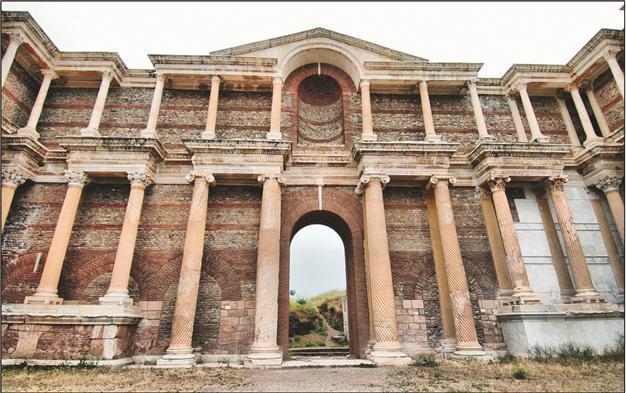New Turkish artifacts added to UNESCO list
ISTANBUL

The ancient city of Sardis, is located in Manisa province in western Turkey, near the modern town of Sart.
UNESCO’s World Heritage Tentative List has been renewed, with Turkey’s Laodikeia, the ancient city of Sardis, the Lydian tumuli of Bin Tepe, Lake Tuz and the Genoese trade routes among the new sites added to the list. The number of Turkish artifacts in UNESCO’s permanent list is 11.
“A total of 41 properties have been submitted for UNESCO’s World Heritage Tentative List,” the Ministry of Culture and Tourism said in a statement.
“The Trading Posts and Fortifications on Genoese Trade Route from the Mediterranean to the Black Sea” comprise some of the noticeable trading ports situated in areas where the Genoese influence can still be observed. The property consists of five forts Yoros, Foça, Çandarlı, Amasra, Akçakoca, Sinop and one tower, Galata.
Significant for ChristianityThe archaeological site of Laodikeia has significance for Christians. Christianity began to spread into the area beginning in the second half of the first century B.C. Laodikeia is one of the Seven Churches mentioned in the Book of Revelation as well as in Paul’s letter to the Colossians. The city gained prominence as a Christian center and as a place of religious pilgrimage in the early Byzantine period.
Another place added to the list, the ancient city of Sardis, is located in Manisa province in western Turkey, near the modern town of Sart. It lies at the foot of the Bozdağ Mountains and at the edge of the fertile plain of the Gediz River. This broad valley has been one of the major routes from the Aegean to Central Anatolia for most of documented history.
The Lake Tuz protected area in Turkey is amongst the most saline lakes in the world following Dead Sea. Countless waterfowl bird species nest and winter around the lake and surrounding terrestrial areas including small islets and swamps, including endangered flamingos and Phoenicopterus ruber. Breeding colonies reach the size of 5,000 to 6,000 nesting places.
As of 2013, UNESCO’s World Cultural Heritage List consists of 981 artifacts, 759 of which are “cultural,” 193 are “natural,” and 29 are both.
